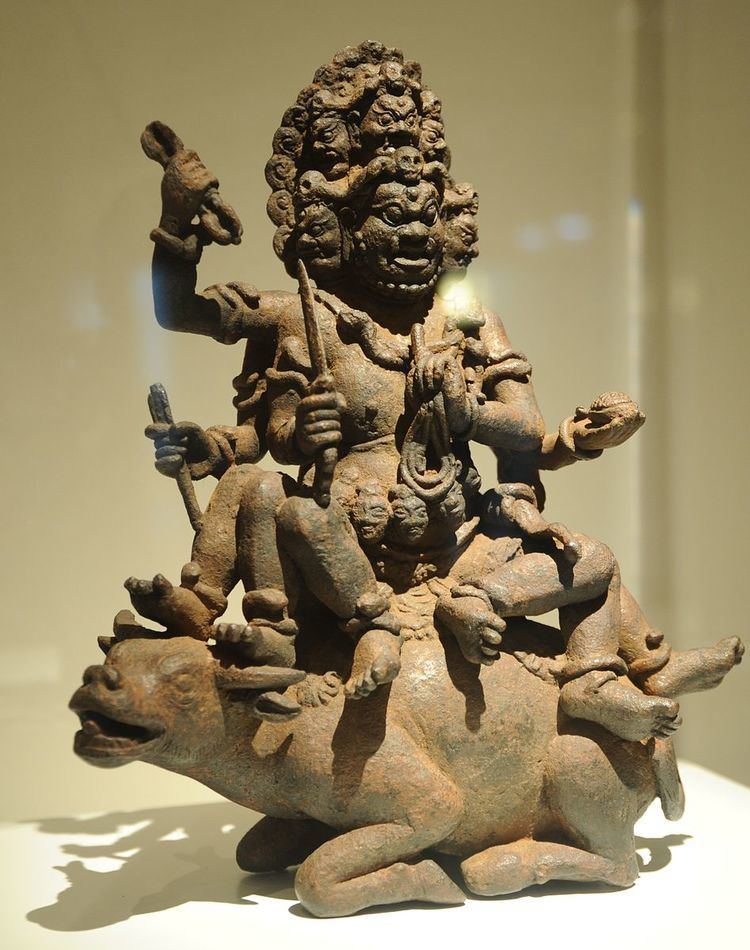 | ||
Yamāntaka (Sanskrit: यमान्तक Yamāntaka or Vajrabhairava Tibetan: གཤིན་རྗེ་གཤེད་, རྡོ་རྗེ་འཇིགས་བྱེད།, Wylie: gshin rje gshed; rdo rje 'jigs byed; Japanese: 大威徳明王 Daitokumyōō; Chinese: 大威德金剛; pinyin: Dà Wēidé Jīngāng; Mongolian: Эрлэгийн Жаргагчи Erlig-jin Jarghagchi) is the "lord of death" deity of Vajrayana Buddhism. Sometimes he is conceptualized as "conqueror of death". He belongs of the Anuttarayoga Tantra class popular deity within the Gelug school of Tibetan Buddhism.
Contents
Outline
Yamāntaka is a wrathful expression of Mañjuśrī, the Samyaksambuddha of wisdom who, in other contexts, also functions as a dharmapala or a Heruka. Yamāntaka manifests in several different forms, one of which (via yogatantra) has six legs, six faces and six arms holding various weapons while sitting or standing on a water buffalo.
Within Buddhism, "terminating death" is a quality of all buddhas as they have stopped the cycle of rebirth, samsara. Yamantaka, then, represents the goal of the Mahayana practitioner's journey to enlightenment, or the journey itself: in awakening, one adopts the practice of Yamāntaka – the practice of terminating death.
Yamantaka in Japanese Buddhism
In Japanese esoteric teachings, Dai Itoku-Myoo is the wrathful emanation of Amida and is pictured with six faces, legs and arms holding various weapons while sitting on a white ox.
Etymology
Yamāntaka is a Sanskrit name that can be broken down into two primary elements: Yama, the name of the god of death; and antaka (making an end). Thus, Yamāntaka means “Destroyer of Death” or "Conqueror of Death".
